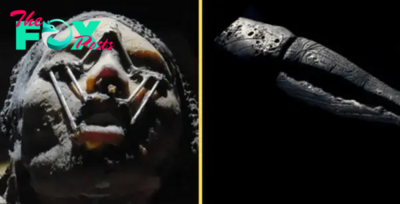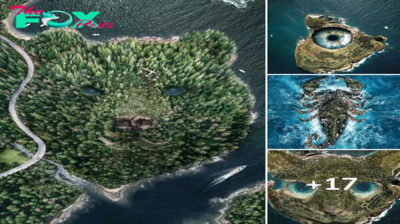Mysterious
B83.Scientists have unraveled a millennia-old enigma with the discovery of Goliath’s tomb.
In the sun-scorched hills of the Valley of Elah, where legends of ancient battles and heroic feats linger in the air, a team of archaeologists made a groundbreaking discovery that would captivate the world. For centuries, stories of the giant Goliath, felled by the young David, had been relegated to the realm of myth. But now, after millennia of mystery, the tomb of Goliath the Giant had finally been unveiled.
The discovery came after years of painstaking research and excavation. Dr. Miriam Cohen, the lead archaeologist, and her team had followed a trail of ancient texts, oral traditions, and tantalizing clues scattered throughout the region. Their persistence paid off when they uncovered a hidden chamber deep within a cave, its entrance sealed by massive stone slabs.

As the stones were carefully removed, revealing the ancient tomb within, the team was struck by the sheer scale of the site. The chamber was vast, its walls adorned with faded frescoes depicting scenes of battle and triumph. At the center lay an enormous stone sarcophagus, intricately carved with symbols and inscriptions in a language long forgotten.
With the world watching, the team prepared to open the sarcophagus. Anticipation and excitement filled the air as the heavy lid was lifted, revealing the remains of a colossal figure. Measuring over nine feet in length, the skeletal remains confirmed the legends of Goliath’s extraordinary size.
But the tomb held more than just bones. Among the artifacts buried with Goliath were weapons of impressive craftsmanship—a massive bronze sword, a spearhead the size of a man’s arm, and a shield bearing the emblem of an ancient warrior clan. These items, remarkably well-preserved, offered a glimpse into the life and times of the legendary giant.
The inscriptions on the sarcophagus and surrounding walls provided further insights. Scholars deciphered the ancient script, revealing a narrative that corroborated and expanded upon the biblical account. It told of a warrior of immense strength and stature, a champion of his people, who met his fate in a duel that changed the course of History.

As news of the discovery spread, the tomb of Goliath the Giant became a focal point for historians, archaeologists, and theologians alike. Debates raged over the implications of the find, its impact on historical and religious narratives, and the origins of the stories that had been passed down through generations.
For Dr. Cohen and her team, the discovery was a culmination of years of dedication and hard work. But it was also the beginning of a new journey—a quest to understand the full story of Goliath, his people, and the world in which they lived. They hoped that their findings would not only illuminate the past but also inspire future generations to explore the rich tapestry of human history.
The unveiling of Goliath’s tomb captivated the public imagination, drawing visitors from around the globe to the Valley of Elah. Pilgrims, scholars, and tourists alike stood in awe before the ancient chamber, reflecting on the enduring power of legend and the timeless quest for knowledge.
As they gazed upon the remains of the giant, they were reminded that even the most extraordinary tales often have roots in reality. And in the silent, sacred space of Goliath’s tomb, the past and present converged, offering a profound connection to the ancient world and the mysteries it still holds.
-
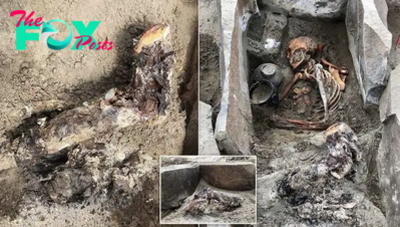
 Mysterious23h ago
Mysterious23h agoB83.Breaking News: A 2,000-year-old mummy, dubbed the ‘Sleeping Beauty’ of Siberia, has been unearthed in a reservoir.
-

 Mysterious23h ago
Mysterious23h agonht.Scientists on a deep-sea expedition 4,500 feet below sea level spot an adorable ‘piglet squid’ 1,000 miles south of Hawaii.
-

 Mysterious1d ago
Mysterious1d agonht.Narwhals have a unique way of ‘seeing’ unlike any other animal on Earth.
-
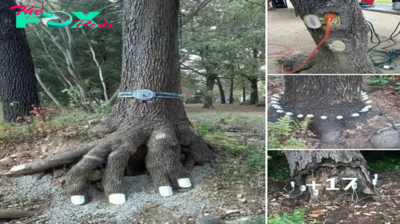
 Mysterious1d ago
Mysterious1d agonht.Exploring the Enchanted Village Chronicles – Discovering a Magical Realm Without Limits
-

 Mysterious1d ago
Mysterious1d agoLS LS ”Farmer snaps rare ‘ghost apples’ in the freezing Midwest”
-
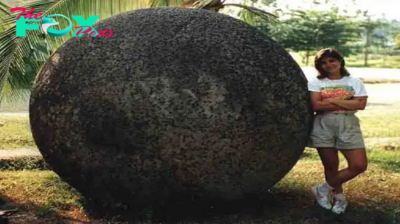
 Mysterious1d ago
Mysterious1d agoLS ”A 10-foot-wide, stone ball recently discovered in a Bosnia forest is touching off a hot debate in academic circles: Was it created by Mother Nature … or a lost civilization?”
-

 Mysterious1d ago
Mysterious1d agoB83.Breaking News: Possible Discovery Emerges Regarding Malaysia Flight MH370
-

 Mysterious1d ago
Mysterious1d agoB83.Unveiling Antarctica’s Enigma: Discoveries Beyond Belief
